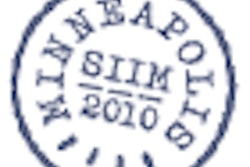The use of dashboards to measure key radiology performance indicators is starting to proliferate, and a new study in the April issue of the Journal of the American College of Radiology offers insight into what academic radiology departments are doing.
A research team from Case Western Reserve University conducted a survey of the members of the Society of Chairs of Academic Radiology Departments (SCARD). The group's objectives were to evaluate the adoption of dashboards by academic radiology departments and to identify the most widely used metrics to track productivity, resource utilization, and financial performance.
"The results provide a guide to the selection of preferred or commonly used indicators to facilitate dashboard implementation and use," the authors wrote (JACR, April 2013, Vol. 10:4, pp. 283-288.e3).
A survey was sent to all 131 members of SCARD. In addition to specific questions about dashboard use, the survey queried members about the size of their departments in terms of the number of radiologists and the number of imaging exams performed annually, as well as geographic location and bed size, wrote Dr. Bahar Mansoori, Dr. Pablo Ros, PhD, and colleagues.
A total of 56 departments responded; 70% of the responding radiology departments were from large hospitals with 500 beds or more. Two-thirds of the respondents performed more than 300,000 imaging exams a year.
The majority of the survey participants were located in the Northeast (38%) region of the U.S., followed by the South and Southwest (30%), the Midwest (23%), and the West (9%). The mean number of radiologists at the hospitals was 47 (± 25), with 29 (± 12) residents.
Almost two-thirds (62%) of the respondents used dashboards for managing accessibility, financial, and productivity indicators. Half of these were new or relatively new implementers of dashboards who had started to use the technology within the past two years. Ten percent had used dashboards for more than a decade.
There are many potential sources of data for dashboards, including electronic medical records, clinical billing systems, clinical enterprise data, patient satisfaction surveys, and RIS and PACS networks. Not surprisingly, the RIS was the source of data for nearly three-fourths (73%) of the responding departments. Six percent obtained data from their PACS, and the remainder obtained data from both the RIS and PACS.
The job titles of individuals who could access the dashboard varied widely. They encompassed almost every type of clinician, administrator, or support staff member who worked in the radiology department or interfaced with the radiology department at an IT or hospital operations administrative level.
As much as vendors of dashboard software promote the value of real-time, hands-on access to what is happening in a radiology department, only 35% of respondents viewed productivity metrics more than once a month. Only 8% viewed the information daily. The most commonly viewed metrics were total examination volume, volume per modality, and productivity performance by radiologists and radiologic technologists.
Regarding access indicators, department turnaround time and patient backlog were the most frequently used. Only half of the respondents regularly reviewed transcription times, and 60% were interested in the time from preliminary findings to report finalization and sign-off.
For financial indicators, metrics reporting revenue, actual expenses compared to budgeted expenses, and the number of days that billable exams were in accounts receivable were regularly reviewed by 70% or more of respondents.
When radiology administrators have the appropriate data, they can make smarter decisions more quickly and accurately, the authors noted. From a patient care perspective, urgent cases can be more easily recognized. Dashboard data can help balance workload among imaging suites, radiologic technologists, and radiologists, and better financial business decisions can be made.
The key hurdle is adoption and intelligent use of dashboard technology. The authors hope that the value of dashboard data will be better understood and lead to faster proliferation in both academic and community hospitals alike.



















